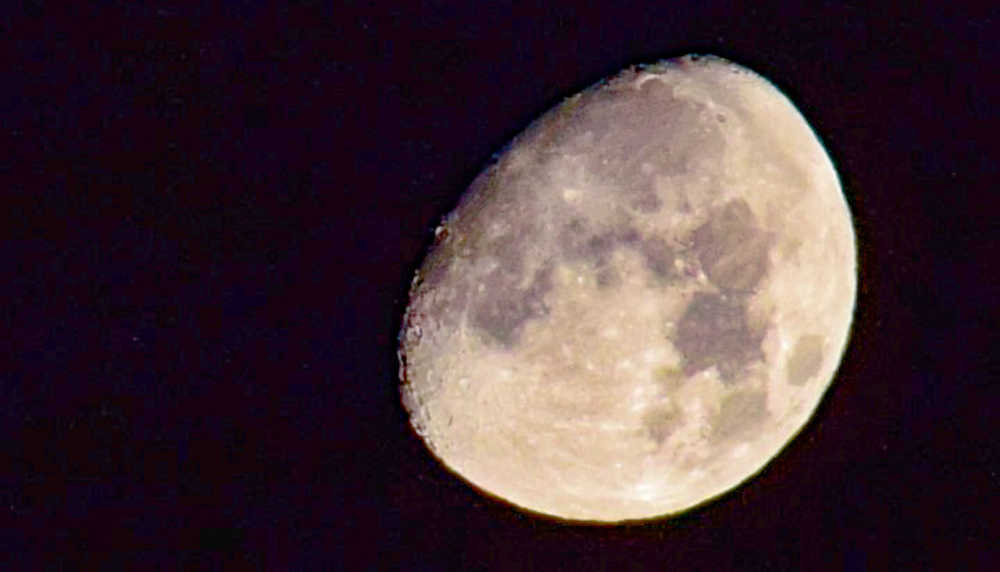I recently received a gift for gracefully aging of a Canon D3300. Being a photography hobbyist and a complete amateur, I have diligently studied our sky and landscape for something artful and amazing — not difficult here on the Kenai Peninsula. But I was swept away by our nightscape! The light pollution in much of the Lower 48 has really dimmed our night sky and our appreciation of it. Even here on the Kenai, it is impossible to set up the perfect nightscape photography unless you head out of town to find the Dark Side.
As I studied more nightscape photography tips, lens settings, ISO markers, shutter speeds, and tripod setups with remote shutter release, I quickly realized that I need to understand our nightscape. The Earth is currently in the best position with our shortened daylight. I was challenged to learn where is the Milky Way? When is the best time to photograph it? Do I want to capture the elusive aurora borealis? Am I tracking star trail? So few answers to so many questions.
Undaunted, I learned that we have a wonderful mix of low temperatures, low humidity, and low level of light pollution this time of year. While most people hibernate inside and common conversation surrounds cabin fever, now is the BEST time to photograph the Milky Way and the starlit blanket gracefully twinkling above us.
Here are some of my tips. New moon cycles are the best time of the month. It is important to note the cloud cover before you head out. Check the humidity and temperature level — a high humidity will skew your photos as the water droplets in the air will create “noise” on your photos. You want the bright stars, not water, in your photos. I also found some training videos that say you should run some test shots. Set your camera settings while in the warmth of your home and test them out in your backyard or the closest park. If you want to stay indoors, put a heavy hat over your lens. This trick will help you work on lowering the “noise” your camera creates.
The photos I initially took were not great: shaky, over exposed, under exposed, trails when I didn’t want them, but still fun all around. The photographs offered here are two examples of night photography and how ambient light affects your picture.
For the nightscape photo, I used a Nikon D3300, AF-S DX NIKKOR 18-55mm, f3.5, aperture 3.6, ISO-3200, focal length 18mm, Exposure +1 step. This was a quick shot without a tripod that caused the tell-tale star trails. This photo was taken behind the Refuge Headquarters building. The only ambient light was from the door light behind me and the front lobby upstairs on the other side of the building. This small amount of light caused quite a daylight effect. Without this ambient lighting the stars would have popped even more.
For the moon photo, I used a Nikon D3300, AF-S DX NIKKOR 55-200mm, f/9, aperture 5, ISO-1600, focal length 200mm, Exposure +1 step. This photo was shot over the Refuge Headquarters complex last month. Notice the detail of the craters. When I took this shot, the raw image was not great — it was distanced, small, and over exposed. I used Adobe Lightroom to fix the image. I lowered the brightness, darkened the highlights, and increased the contrast and shadows. I also adjusted the sharpness of the edges to really bring out the craters along the moon’s border. Use any photo editing software you are comfortable using, not just from Adobe Creative Cloud. Nikon had a free download with my camera’s purchase. Your raw shot may not be amazing right off the click, but with a little assistance, you can really make art from your world.
If this story has piqued your interest in nightscape photography, we live in a great place for it. The Kenai National Wildlife Refuge has cabins for rent year round (www.recreation.gov) and winter camping is always available at any campsite. Find those tucked away spots that will get you away from our city lights.
Prepare to spend time to set up. Remember, it’s not about how many photos you take — you only need one to shock and awe.
Mark your calendars, charge your camera batteries, and join us for our Full Moon Walk & Telescope Night, Jan. 23, at the Visitor Center, starting at 6 p.m. Staff are requesting pre-registration to join the evening walk, so give us a call at 907-260-2820.
If you head out on your own at night on the Refuge, think about leaving a safety plan with a family member or friend just IN CASE. And HAVE FUN! I know I do.
Rebecca Uta is the Administrative Officer at Kenai National Wildlife Refuge. Find more information at http://kenai.fws.gov or http://www.facebook.com/kenainationalwildliferefuge.

